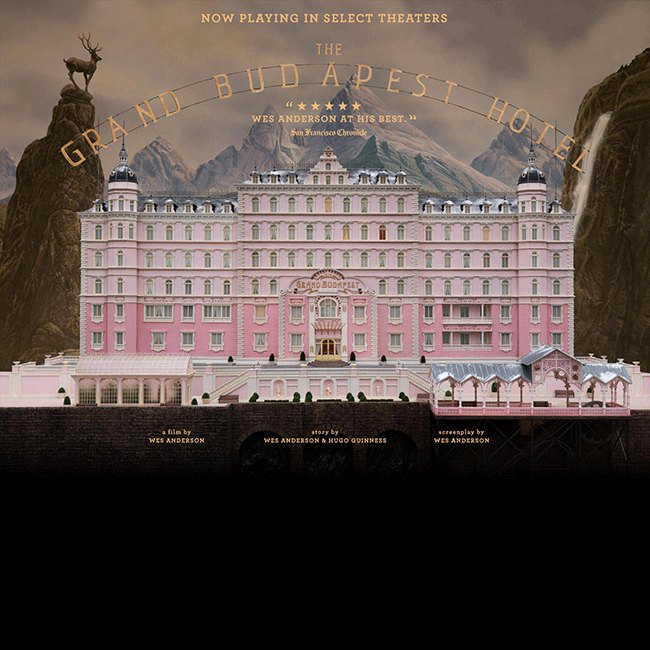REVIEW: Wes Anderson’s new film, “The Grand Budapest Hotel” overwhelms but entertains
It is complicated, quirky, and aesthetically pleasing. It is a flashback within a flashback, stretching across three eras: the ‘80s, ‘60s, and ‘30s. The cast is large and star-studded, with each character hugely important in some way to the execution of the movie. The plot is, at its simplest moments, confusing and hard to follow.
But nothing less could be expected of Wes Anderson’s new film, “The Grand Budapest Hotel.”
After all, Anderson is the idiosyncratic Hollywood director responsible for such pillars of artistic cinema as “The Royal Tenenbaums” and “Moonrise Kingdom,” among many others.
Set in the fictional Eastern European country of Zubrowka, the focus of the film is the hotel for which the movie is titled, a pink, lavish, castle-like retreat. The guests are “rich, old, insecure, vain, superficial, blond, (and) needy,” as described by Monsieur Gustave H. (Ralph Fiennes), the hotel manager.
Along with Fiennes, “The Grand Budapest Hotel” boasts Anderson staples such as Bill Murray, Owen Wilson, and Jason Schwartzman, along with additions to Anderson’s ever-expanding list of collaborators.
Monsieur Gustave H. is accompanied throughout the plotline by the lobby boy Zero, portrayed by Tony Revolori. The two travel around Europe by train, claiming the esteemed painting named “Boy with Apple,” escaping jail, and trying to clear Gustave H.’s name of a murder accusation. Along the road, they get in trouble with various soldiers and elites, even engaging in a high-speed chase on a sled.
Anderson, master of turning somewhat uncomfortable situations into exquisite cinematographic masterpieces, does not disappoint here. The symmetry on the screen, which remains present throughout much of the film, is hard to miss. The aspect ratio of the screen switches from a typical widescreen view to the more classic 1:33 ratio, depending on the era being portrayed in the storyline. Reaction shots are filmed at 90- and 180-degree angles, establishing a sense of nostalgia. Once you notice it, it becomes difficult to ignore the attention to detail that Anderson employs to create an entire universe in “The Grand Budapest Hotel.”
But don’t forget, this film also is funny. A wide array of comedic devices is used, including irony, slapstick, and overstatement. Anderson knows that a little bit of humor makes his characters all the more relatable and lovable.
This film is full of quintessential Wes Anderson elements, from an over-the-top plot to words that roll across the screen in Futura font.
By all means, go and see “The Grand Budapest Hotel.” You’ll love what you see on screen, but don’t forget the man behind it: This is definitely an Anderson creation.












